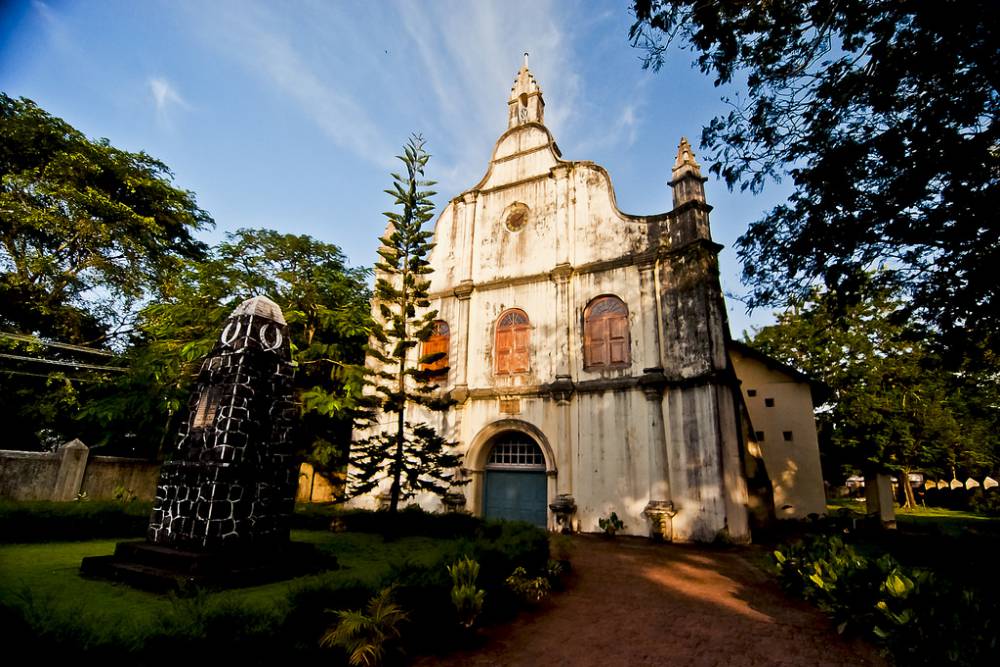

St. Francis Church in Kochi, Kerala, has a storied past that weaves through the annals of colonial history in India. Built in 1503 by the Portuguese traders, it is hailed as one of the oldest European churches in India. The church's historical significance is marked by the fact that it once served as the burial site for the legendary explorer Vasco da Gama, who died in Kochi in 1524. Although his remains were later moved to Lisbon, his initial interment at St. Francis Church solidified the site as a landmark for global explorers and history enthusiasts alike.
The church's architecture reflects the colonial influence with a facade that has stood the test of time. Over centuries, it has witnessed numerous transitions in power, from the Portuguese to the Dutch and then the British. Through each era, St. Francis Church has experienced modifications reflecting the architectural styles and ecclesiastical preferences of its colonial masters.
Dutch reformed the Portuguese-built structure into a Protestant church and it was during the British era in 1804 that it became an Anglican church, under the Church of South India. Despite these changes, the original edifice, including the timber that was used to construct the church, remains intact and continues to intrigue historians and architects alike.
Tourism at St. Francis Church gained momentum post-independence, as India began to curate its vast cultural and historical heritage for the world. Steadily, it grew to become a crucial part of the Kochi tourism circuit. Visitors are drawn not only to its rich history but also to the serene environment and the narrative that each corner of this monumental structure holds.
In recent years, the trend has shifted towards experiential and sustainable tourism. Tourists are now seeking in-depth cultural interactions and are interested in learning about the local customs, cuisine, and way of life. Interactive guided tours that showcase the church's history and the broader cultural landscape of Kochi have gained popularity.
Moreover, travel technology has also sculpted new trends. Virtual reality tours are making waves, allowing individuals from across the globe to explore St. Francis Church from the comfort of their homes. Smart tourism that includes digital guides and multilingual apps also enhance the visitor experience, catering to a diverse global audience.
Eco-tourism is another rising trend which resonates with the ethos of Kerala's tourism. Visitors at St. Francis Church are now more informed and interested in preserving the heritage sites, supporting local economies, and minimizing environmental impacts during their travel.
Today, St. Francis Church continues to stand proud as a testament to the historical narratives that shaped modern-day Kochi. The local authorities, in collaboration with the tourism department, maintain the church carefully, ensuring that while it continues to serve as a place of worship, it remains a well-preserved heritage site for future generations of tourists to explore and appreciate.
Whether as a part of the 'Muziris Heritage Project' or the larger 'Kerala Tourism' initiatives, St. Francis Church is widely marketed and has been successful in drawing visitors year-round, contributing significantly to the region's tourism industry and economy. Efforts are continuously being made to maintain its sanctity and legacy as an iconic landmar of Kochi that holds a special place in India’s ecclesiastical and colonial history.